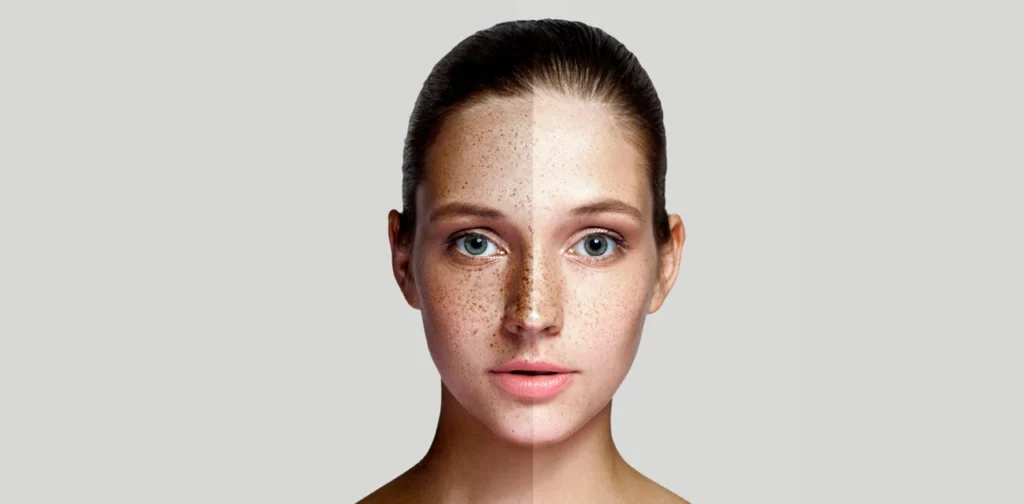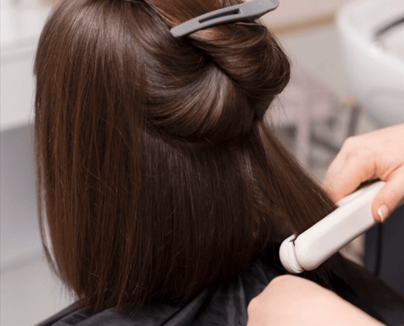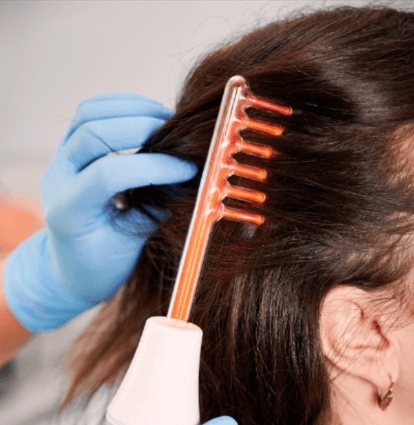Hyperpigmentation is one of the most common skin concerns in Korea, especially among patients with Fitzpatrick skin types III–V. However, many people confuse post-inflammatory hyperpigmentation (PIH) with melasma—two different conditions that require very different treatment strategies.
In this in-depth guide, we explore how top Korean dermatology clinics differentiate and treat PIH vs. melasma using precise diagnostics, tailored laser protocols, and skin-type-specific interventions.
🔬 What Is the Difference Between PIH and Melasma?
| Feature | Post-Inflammatory Hyperpigmentation (PIH) | Melasma |
|---|---|---|
| Cause | Inflammation or injury (e.g., acne, laser, eczema) | Hormonal changes, sun exposure, genetics |
| Onset | After trauma to the skin | Gradual and chronic |
| Location | Any area affected by trauma | Symmetrical areas: cheeks, forehead, upper lip |
| Color | Brown, red, or purple (depending on depth) | Light to dark brown |
| Duration | Temporary (months to years) | Chronic and relapsing |
| Response to treatment | Usually good with proper care | Can be resistant and require long-term management |
🧪 How Korean Clinics Diagnose PIH vs. Melasma
Top dermatology clinics in Korea use a combination of:
1. Wood’s Lamp Examination
- Helps determine whether the pigmentation is epidermal (surface-level) or dermal (deeper).
- PIH usually appears more superficial; melasma can be mixed type.
2. Digital Skin Analysis
- Devices like OBSERV 520x or VISIA are used to map pigmentation depth and patterns.
3. Patient History
- For PIH: often follows a recent breakout, rash, or cosmetic procedure.
- For melasma: often linked to hormonal factors, such as pregnancy, oral contraceptives, or chronic sun exposure.
🩺 Korean Clinic Approach to Treating PIH
🔹 Best For: Acne scars, laser damage, eczema-related marks
PIH is highly responsive to targeted treatment when diagnosed early.
Common Treatments:
- Low-fluence Q-switched Nd:YAG laser
- Weekly or biweekly sessions
- Reduces melanin in the epidermis
- Topical Creams
- Hydroquinone (short-term)
- Azelaic acid, kojic acid, niacinamide
- Chemical Peels
- Mandelic or glycolic acid peels
- Often used in low concentrations to avoid re-inflammation
- LED Light Therapy
- Reduces inflammation and enhances skin healing
- Korean Cosmeceuticals
- Products containing centella asiatica, tranexamic acid, and arbutin
✅ Korean clinics emphasize barrier repair and anti-inflammatory protocols to prevent recurrence of PIH.
🩺 Korean Clinic Approach to Treating Melasma
🔹 Best For: Hormonal pigmentation, mixed or dermal type
Melasma is more stubborn and prone to relapse, requiring a multi-modal and long-term plan.
Common Treatments:
- PICO Laser Toning (PicoSure, PicoPlus, Discovery PICO)
- Safest for deeper, dermal melasma in Asian skin
- Used at low energy to avoid rebound PIH
- Oral Tranexamic Acid (TXA)
- Commonly prescribed for 8–12 weeks
- Reduces melanin production and vascular triggers
- Mesotherapy with TXA or Glutathione
- Microinjections to brighten and suppress pigmentation
- Topical Regimens
- Combination of hydroquinone, tretinoin, corticosteroids (“triple cream” under prescription)
- Korean alternatives: niacinamide, licorice root extract
- Maintenance Peels + Custom Skincare
- Light peels (glycolic, lactic)
- Personalized cosmeceuticals from the clinic pharmacy
✅ Melasma treatments are slow and steady—Korean clinics educate patients that full results may take 2–3 months or more.
⚖️ PIH vs. Melasma: Treatment Strategy Summary in Korea
| Factor | PIH | Melasma |
|---|---|---|
| Laser Type | Q-switched Nd:YAG | PICO toning, Spectra XT |
| Medication | Rarely oral | Oral TXA often prescribed |
| Topicals | Anti-inflammatory and exfoliating | Brightening + pigment inhibitors |
| Time to see results | 4–8 weeks | 8–16 weeks + |
| Risk of recurrence | Low if trigger is removed | High without consistent management |
🏥 Leading Korean Clinics for PIH & Melasma
| Clinic | Best For | Notable Treatments |
|---|---|---|
| Banobagi Dermatology | Mixed melasma, deep PIH | Custom laser + meso + skincare combo |
| Oracle Skin Clinic | Nationwide consistency | TXA protocol + laser toning |
| Leaders Dermatology | Sensitive skin, post-acne PIH | Peels + ampoule therapy |
| The ME Clinic | Tourists & mild cases | PICO + brightening facials |
| Muse Clinic | Early PIH & maintenance | Budget-friendly, quick sessions |
✨ Final Advice from Korean Dermatologists
- Don’t self-diagnose: PIH and melasma look similar, but respond very differently.
- Avoid harsh treatments: Aggressive peels or high-energy lasers can worsen both conditions.
- Always wear SPF 50+ daily, even indoors or on cloudy days.
- Treat inflammation first if you have active acne or rosacea before starting pigmentation treatments.
📌 Summary: Key Differences Between PIH and Melasma
| Feature | PIH | Melasma |
|---|---|---|
| Trigger | Trauma/inflammation | Hormones, UV |
| Duration | Temporary | Chronic |
| Treatable? | Yes, usually fast | Yes, with consistent care |
| Risk of recurrence | Low if cause is gone | High, needs maintenance |
| Korean strategy | Anti-inflammatory + exfoliation | Long-term laser + medication plan |




